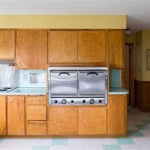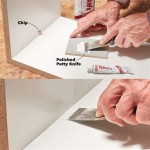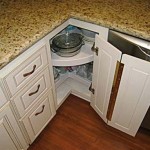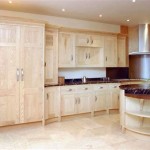How To Connect Kitchen Cabinets Together
Connecting kitchen cabinets is a crucial step in any kitchen renovation or installation. Properly joined cabinets ensure a stable, level, and aesthetically pleasing final result. This process requires careful planning, accurate measurements, and the correct tools and techniques. This article outlines the methods and best practices for connecting kitchen cabinets effectively.
Before beginning the connection process, ensure all cabinets are level and square. Minor imperfections in individual cabinets can compound when joined, leading to noticeable unevenness across the entire run. Use shims as needed to correct any discrepancies before proceeding.
Several methods exist for joining kitchen cabinets, each offering its own advantages. The most common methods include using screws, clamps, and specialized joining hardware.
Screws offer a straightforward and robust connection. Typically, cabinet sides are predrilled with pilot holes to facilitate screw insertion. When using screws, it's critical to select the appropriate screw type and length to avoid damaging the cabinet material or creating a weak joint. Wood screws are commonly used, ideally with a length that penetrates well into the adjoining cabinet side without protruding through the exterior surface.
Clamps are essential tools for holding cabinets together while the primary joining method, such as screws or glue, sets. Clamps provide the necessary pressure to maintain a tight and flush connection. Various clamp types are available, including bar clamps, C-clamps, and quick-release clamps. Select the appropriate clamp type based on the size and configuration of the cabinets being joined.
Specialized joining hardware, often referred to as cabinet connectors, provides a secure and concealed joining method. These connectors are typically metal brackets or clips that are installed inside the cabinets, pulling the adjoining sides together. Cabinet connectors offer a strong joint while minimizing visible hardware.
Once the necessary tools and materials are assembled, the process of connecting the cabinets can begin. The first step is to position the cabinets accurately in their intended locations. Use a level to ensure each cabinet is plumb and level, adjusting with shims as necessary.
Next, apply a thin bead of wood glue to the mating surfaces of the cabinets. This glue adds an extra layer of strength and stability to the joint. Be mindful not to apply excessive glue, which can squeeze out and create a mess.
With the glue applied, bring the two cabinets together, ensuring they are flush and aligned. Use clamps to hold the cabinets firmly in place while the glue dries. Follow the glue manufacturer's instructions for drying times.
If using screws, pre-drill pilot holes to prevent the wood from splitting. Drive the screws through the pre-drilled holes and into the adjoining cabinet, ensuring a tight and secure connection. Countersink the screw heads slightly below the surface of the cabinet.
If using cabinet connectors, install them according to the manufacturer's instructions. These connectors typically involve screwing or clipping the hardware to the inside surfaces of the cabinets, drawing the sides together.
Once the primary connection method is complete and the glue has dried, remove the clamps. Inspect the joint for any gaps or misalignments. If necessary, fill any small gaps with wood filler and sand smooth once dry.
For wall cabinets, the process is similar. Ensure the wall is properly prepared and any necessary mounting rails or brackets are installed. Use a stud finder to locate wall studs and mark their positions. Position the wall cabinets and secure them to the wall using appropriate screws.
When joining wall cabinets together, the same techniques used for base cabinets can be applied. Use clamps to hold the cabinets together, apply glue to the mating surfaces, and secure the connection with screws or cabinet connectors.
Reinforcing the joints between cabinets adds significant strength and stability, particularly for longer runs of cabinets. Several reinforcement methods are available, including corner braces and back panels.
Corner braces are metal brackets installed in the interior corners of the cabinets. These braces provide additional support and help prevent the cabinets from racking or twisting.
Back panels, typically made of thin plywood, are attached to the back of the cabinets. These panels provide a large surface area for glue and screws, creating a strong and rigid assembly.
Regardless of the chosen connection method, meticulous attention to detail is crucial. Accurate measurements, proper alignment, and the correct use of tools and materials will ensure a successful and long-lasting connection between kitchen cabinets.
After the cabinets are connected, the final step is to install the doors and drawers. Ensure these components are properly aligned and adjusted for smooth operation. With the doors and drawers installed, the cabinet installation is complete.

How To Connect Your Kitchen Cabinets Diy Kitchens Advice

How To Install Kitchen Cabinets Diy Family Handyman

Installing Kitchen Cabinets Momplex Vanilla Ana White

How To Install Cabinets Like A Pro The Family Handyman

How To Install Kitchen Wall And Base Cabinets Builder Supply

Solo Kitchen Cabinet Installation

How To Install Upper Cabinets Like A Pro Cabinetselect Com

How To Install Cabinets Like A Pro The Family Handyman
Foolproof Kitchen Cabinet Installation Jlc

How To Install Kitchen Cabinets The Home Depot








